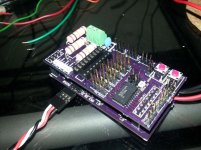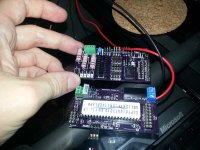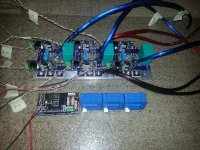zombiess
10 MW
bowlofsalad said:What I was thinking was making a mosfet box out of pre-made heat sinks, at least using a few heatsinks as a few of the walls, and then filling the box with mineral oil. There are pros and cons to everything, but I prefer the idea of filling the box with mineral oil to pumping water around. Using connectors stops fluid from wicking, you place the connector like you would a door to a room.
So this is clearly not for a bicycle and for a scooter or MC, right? If not, you should establish the power level, constant and burst you are after before attempting the impractical.
On an ebike, I can pump ~240A burst through 4 parallel MOSFETs pulling 175A battery, couldn't get the temp over 60C on the MOSFET case after several minutes of abuse.




